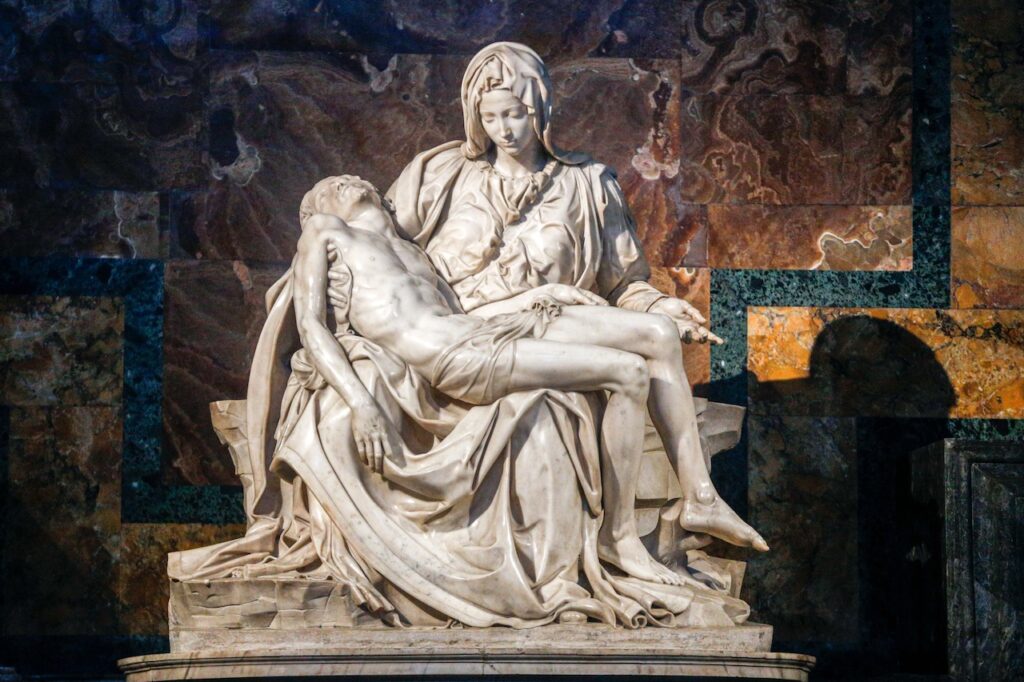Although few words spoken by Mary are recorded in Scripture, her silence speaks volumes about the mysteries of God. According to early Christian patriarch St. Ignatius of Antioch’s Epistle to the Ephesians, three mysteries in the life of Jesus cry out to the world and only Mary was present at all three. They are: the virginity of Mary, the birth of Jesus, and Jesus’ death on the cross.
According to one translation, St. Ignatius called the events “three mysteries of renown, which were wrought in silence by God.” Other translations call them “three mysteries to be cried aloud” or “three mysteries to be loudly proclaimed.”
The mysteries themselves cry out from the silence of God. St. Ignatius finds great significance in the fact that the central moments in the life of Christ are essentially nonverbal. The early Christian patriarch noted that these three truths transcend human language, and that no one was better able to hear God speak in the silence than Mary.
With her consent, a promise was fulfilled, and a young maiden became the Ark of the New Covenant. Her relationship with the Trinity was a singular favor granted that would never be repeated in the history of the world.
The words of Mary’s fiat, heard only by God and the angel, now cry out from every corner of the world. Mary’s fiat not only espoused her to Love Eternal, it ushered in the means by which mere mortals could be espoused to God.
According to St. Ignatius, another mystery was the birth of Jesus. Although Scripture mentions only his mother, St. Joseph presumably was also present, but what he actually witnessed in regard to the birth is unknown. Following the birth, Scripture tells us that the shepherds worshipped the Son of God in silent adoration, along with Mary, who pondered all these things in her heart. When humanity and divinity meet, profound silence can be the only response, for such a marriage is beyond human machinations.
In the hours that followed, one might wonder what was in Mary’s heart as she gazed upon this God-child nursing at her breast. Was her heart warmed by the flame of love that burned within her as she cradled the infant in her arms?
In his interpretation of the birth of Jesus, St. John of the Cross wrote, “When the time had come for him to be born, he went forth like the bridegroom from his bridal chamber, embracing the bride, holding her in his arms.” That God held Mary even as she held him represents the mutual exchange of love between the bride and the Bridegroom, and thus her joy would have been complete.
Similarly, John Damascene wrote: “For the eternal Light which came into existence out of eternal Light before the ages, the immaterial and the bodiless One, takes a body from this woman and comes forth from the bridal chamber as Bridegroom although he is God.” His description alludes to the birth of a Savior who also takes us to himself as brides. Such divine mysteries do indeed cry out from heaven and resound throughout the world for all who have ears to hear.
The third mystery is the death of Jesus on the cross. Although his crucifixion was a public event, there was also a sense in which it is among the most hidden. When the Word of God died, the silence was deafening. In response to the Son’s cry to the Father, “My God, my God, why have you forsaken me?” (Mt 27:46), there was only silence from the Father.
As we honor Mary during the month of May, the Church invites us to set aside time to contemplate the silence of God as Mary did. In doing so, may every head bow before the Queen of heaven and Earth, and with the psalmist pray, “Set a guard, Lord, before my mouth, keep watch over the door of my lips” (Ps 141:3) lest we offend the silence of God.
Barbara Hughes is an award-winning author, retreat facilitator and spiritual guide. She lives in Virginia Beach and can be reached at [email protected].

